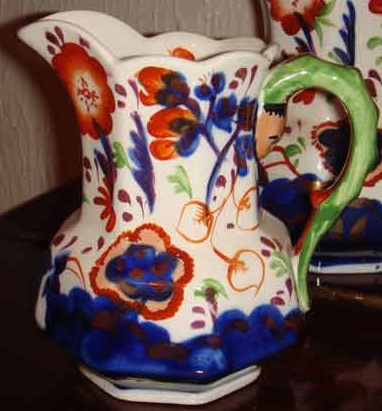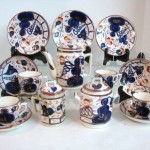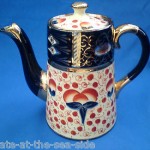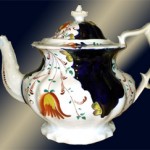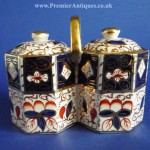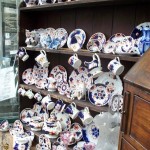Gaudy Welsh adorned the much loved Welsh Dressers in cottages and farmhouses in Wales and even today this is still the best way to display the wares.
It first appeared in Staffordshire, England around the late 1820’s.
The main colours chosen for decoration were Orange,(dark and light) greens and cobalt blue. In addition turquoise, yellow and pink were also used along with gold and pink lustre.
The earliest pattern without doubt was Tulip, although the Oyster pattern wasn’t far behind. The Welsh potteries who were in fierce competition with the Staffordshire potteries for the open market, were alarmed when large consignments of Gaudy Welsh appeared for sale in Welsh auctions.
Swansea immediately followed suit and started to produce their own Gaudy Welsh.
It was made in the Cambrian pottery under Lewis Llewellyn Dillwyn and also at the South Wales pottery or Llanelly pottery which started production in 1839. It is also possible that the Ynysmedw pottery may also have made limited quantities of it, as new evidence emerges about this little known pottery in the Swansea Valley.
The working class people of Wales preferred the name of Swansea Cottage and this term is still used to describe Gaudy Welsh throughout the Principality, especially by the Welsh older generations.
The Tulip pattern has also been called the Welsh Daffodil, and the Oyster pattern the Smoking Indian. Although these latter names have only been heard in South and West Wales.
A huge amount was also shipped to the United States of America, where it was quickly adopted by the Welsh emigrants, who subsequently named most of the various patterns after the towns and areas in Wales that they had known and loved.These names are delightful and range from Bethesda in the North to Glamorgan in the South. Some names are called after flowers such as Marigold and Cambrian Rose. A few are strictly American in origin such as Wagon Wheel and Carousel.
Gaudy Welsh was produced over a long period of time and Staffordshire potteries such as Allertons and Blairs continued production into the early 20th century.
The late Gaudy Welsh always has the manufacturer’s name on the items, as opposed to the early wares which were 95% unmarked.

